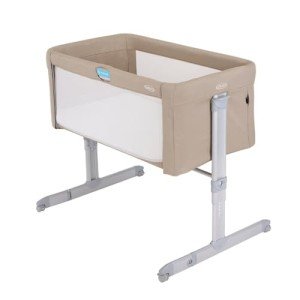Tots and Cots: A Comprehensive Guide for Parents
When it pertains to making sure a safe and comfy sleeping environment for infants and young children, the choices parents make-- ranging from cribs to cots-- can considerably impact their wellness. Today's short article dives deep into the intricacies of selecting the best sleeping plans for tots, highlighting safety, style, functionality, and how these choices progress as a kid grows.
Understanding Tots and Cots
Tots usually describe young kids, especially young children aged in between 1 to 3 years, while cots are the sleeping plans specifically developed for babies and toddlers. The appropriate sleeping equipment for this age includes various types of cots, cribs, and young child beds.
Types of Cots
Numerous designs exist to fulfill the diverse requirements of both moms and dads and kids. Below is a list laying out the most common types of cots available:
Standard Crib
- A conventional crib is created for infants and usually includes sides that can be changed to different heights.
Convertible Crib
- This kind of crib can convert into a toddler bed, daybed, or full-sized bed as the child grows, making it a long-term investment.
Portable Crib
- Likewise understood as travel cots, these are light-weight and easily collapsible, perfect for taking a trip or smaller sized home.
Co-Sleeper
- A co-sleeper crib attaches to the side of the moms and dads' bed, allowing for easy gain access to while ensuring the baby has a separate and safe sleeping area.
Young child Bed
- A young child bed is a little bed that resembles a basic bed however is created particularly for toddlers, typically including safety rails.
Mini Crib
- Mini cribs are smaller sized than standard cribs, making them a terrific choice for tight spaces, but they are suitable for babies just.
Safety Considerations
Making sure safety is vital when selecting a cot for a kid. Here are important security guidelines parents must think about:
- Check for CPSC Certification: Ensure that the cot follows the Consumer Product Safety Commission (CPSC) requirements.
- Prevent Drop-Sides: Cots with drop-sides have actually been connected to security threats, and the current safety guidelines prohibit them.
- Utilize a Firm Mattress: A firm bed mattress decreases the danger of suffocation and should fit snugly within the cot.
- Keep Bedding Simple: Use a fitted sheet and avoid pillows, comforters, and packed animals that can posture suffocation threats.
- Follow Weight and Age Guidelines: Ensure the kid has not gone beyond the cot's weight limitation and is still within the advised age.
Transitioning from a Cot to a Toddler Bed
The shift from a cot to a young child bed can be a psychological milestone for both moms and dads and children. Here are steps to ease the transition:
Timing
Choosing when to shift can be subjective, but it's normally recommended to make the switch between 18 months and 3 years, based upon factors like:
- Physical Ability: If the child is climbing up out of the cot.
- Potty Training: Consider transitioning if the child is potty training and requires much easier access.
- Habits: Exhibiting indications of maturity, such as following directions or revealing a desire for self-reliance.
Tips for Making the Transition Smooth
- Include Your Child: Let the kid select their brand-new bedding or bed decor to instill excitement about the change.
- Keep Routine Consistent: Maintain the child's bedtime routine to provide comfort during this period of modification.
- Describe the Change: Discuss the shift to a young child bed positively, making it seem like a great experience.
- Precaution: Place the bed versus the wall or usage bed rails to avoid falling during sleep.
Choosing the Right Bed
When selecting a toddler bed, moms and dads require to consider aspects like:
- Height: Low-profile beds are ideal for toddlers who may fall out throughout sleep.
- Toughness: Ensure the bed can withstand active play along with sleep.
- Design and style: Choose a design that matches the child's room and is attracting the kid.
Choosing the best cot for your youngster can be a daunting process, but understanding the choices available, essential security factors to consider, and the right timing for transitioning to a young child bed can make this journey simpler for moms and dads. Investing effort and time into these choices will ensure that your kid has a safe, comfy, and nurturing sleep environment.
FAQs
1. What is the distinction in between a cot and a crib?
- A cot is generally a smaller bed created for more youthful toddlers, while a crib is a larger bed that is normally suitable for infants approximately 3 years old.
2. When should I move my child from a crib to a toddler bed?
- The shift time is usually between 18 months and 3 years; this modification is based upon the kid's physical capabilities and behavioral indications.
3. How can Read Homepage guarantee my kid is safe while sleeping?
- Always follow security standards, utilize a company mattress with a basic bedding plan, and monitor the cot's weight limit.
4. What should I do if my kid tries to climb out of the cot?
- If your child is climbing up out, it might be time to think about transitioning to a toddler bed to avoid falls.
5. Can I use the exact same bed mattress when transitioning?
- Usually, it is best to change the crib bed mattress with one that is specific to the young child bed. Ensure it fits comfortably and adheres to safety requirements.
By considering these elements, parents can design healthy sleep routines and supply their children with a safe environment that promotes relaxing sleep. Investing in quality sleeping plans will contribute to the child's total advancement and happiness.

